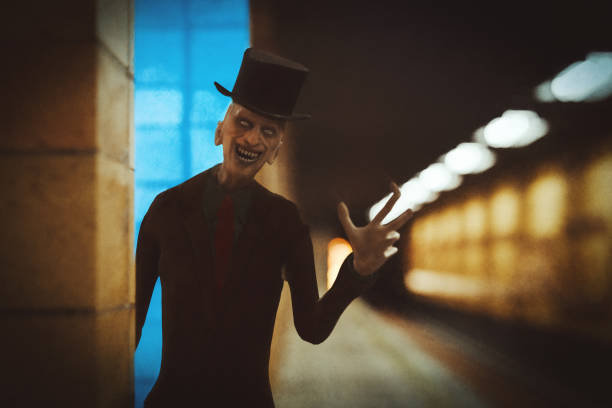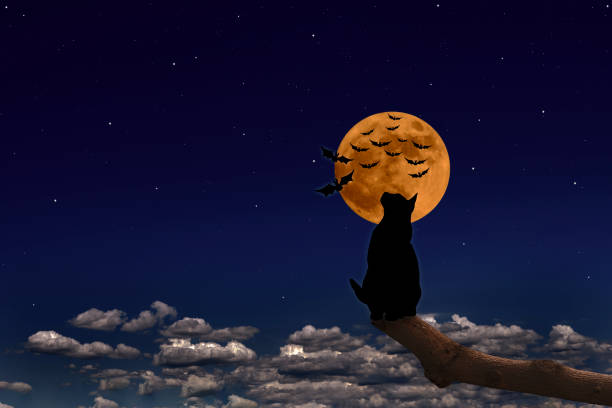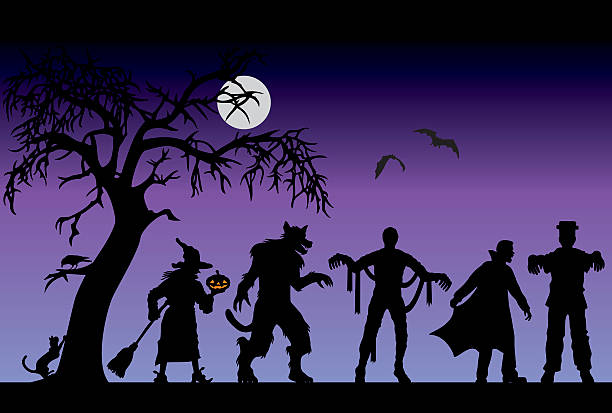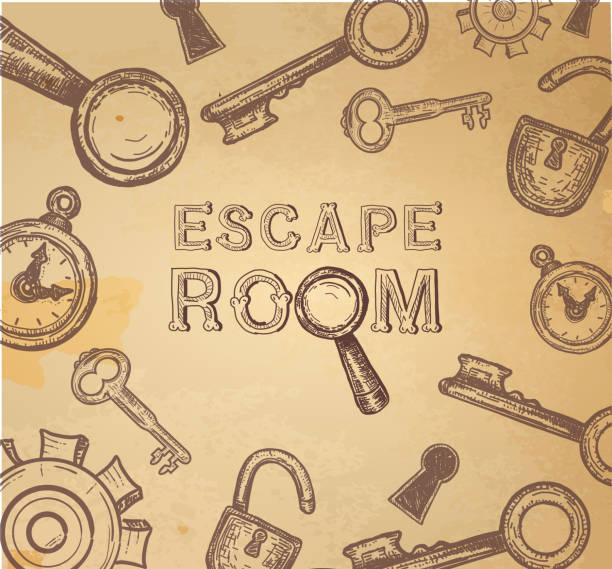How To Write A Vampire Character (10 Best Tips)
Embark on a moonlit journey into the realms of creativity as we unveil the secrets of crafting a vampire character that transcends the clichés and breathes fresh life into the supernatural narrative.
In this exploration of the macabre and the mysterious, we will delve into the cryptic lore of vampires, disentangle the threads of timeless archetypes, and navigate the delicate dance between darkness and allure.
From the meticulous development of physical attributes and supernatural abilities to the profound exploration of internal conflicts and moral dilemmas, this guide will serve as a compass through the intricate landscape of character development.
So, sharpen your quills and prepare to embrace the nocturnal enigma, as we illuminate the path to writing a vampire character that captivates and transcends the expected.
How To Write A Vampire Character
Creating a vampire character involves several steps to ensure depth and uniqueness. Here’s a step-by-step guide:
Define Your Vampire’s Nature
Decide on the type of vampire your character will be. Will they be traditional bloodthirsty creatures of the night, or will they have a more nuanced nature?
Establish Origins and Background
Determine your vampire’s backstory. How did they become a vampire? Was it through a bite, a curse, or some other means? What was their life like before becoming a vampire?
Physical Attributes
Describe your vampire’s appearance. Are they pale with sharp fangs? Do they have any distinguishing features like glowing eyes or unusually long nails?
Personality Traits
Develop your vampire’s personality. Are they brooding and mysterious, charming and seductive, or something else entirely? Consider how their immortality and thirst for blood might affect their psyche.
Weaknesses and Strengths
Decide on your vampire’s powers and vulnerabilities. Are they superhumanly strong and fast? Do they have the ability to hypnotize or shape-shift? What weaknesses do they have, such as sunlight, garlic, or crosses?
Moral Code and Motivations
Explore your vampire’s moral compass and motivations. Do they adhere to a strict code of ethics despite their predatory nature, or do they revel in their dark desires? What drives them forward in their existence?
Relationships and Connections
Determine how your vampire interacts with other characters. Do they form deep connections with humans or other supernatural beings, or do they prefer to remain solitary?
Conflict and Growth
Create challenges and obstacles for your vampire to overcome. This could include internal struggles with their vampiric nature, conflicts with other vampires or hunters, or navigating the complexities of immortal life.
Unique Characteristics
Consider what sets your vampire character apart from others in the genre. What makes them memorable and compelling to readers or viewers?
Evolution and Change
Allow your vampire character to evolve throughout your story. Whether they experience redemption, damnation, or something in between, let their journey be dynamic and engaging.
By following these steps, you can craft a multifaceted and intriguing vampire character that adds depth to your storytelling.

Understanding Vampire Lore and Archetypes
Embark on a nocturnal odyssey into the rich tapestry of vampire lore and archetypes, where shadows conceal centuries-old secrets and immortal tales unfold.
From the murky depths of folklore and ancient mythology emerges a symphony of seduction, monstrosity, and tragedy, each note weaving the complex melody of vampiric existence. S
ink your literary fangs into the pulsating heart of these bloodsucking legends, exploring the metamorphosis of these nocturnal beings across cultures and eras.
Whether bathed in the romantic moonlight of Gothic tales or the stark realism of contemporary fiction, the archetype of the vampire transcends time, shape-shifting to embody the collective fears, desires, and dreams of humanity.
As you delve into the cryptic realms of vampire lore, prepare to unearth the coffin of clichés, for it is in the exploration of untrodden narrative territories that the true essence of vampiric storytelling reveals itself—a seductive dance between the eternal and the ephemeral.
Historical origins of vampires in folklore and mythology
Step back through the veil of time, where the roots of vampire mythology burrow deep into the soil of ancient folklore, revealing an enigmatic history as captivating as the creatures themselves.
In the whispering winds of mythology, from the dusty annals of Mesopotamia to the haunted castles of Eastern Europe, the spectral figure of the vampire emerges—an immortal specter whose origin tales echo through the ages.
From the Mesopotamian Lilitu to the Greek Lamia, these vampiric precursors lurk in the shadows of myth, embodying a spectral dance between the divine and the damned.
As the nocturnal folklore weaves through the loom of time, the vampire metamorphoses, taking on new guises in diverse cultures—whether as the Chinese Jiangshi or the Filipino Aswang.
In the labyrinth of legends, the historical origins of vampires beckon, inviting you to traverse the ancient landscapes of human imagination, where the thirst for eternal life mingles with the intoxicating elixir of the supernatural.
Analysis of popular vampire archetypes (e.g., seductive, monstrous, tragic)
Dive into the kaleidoscopic realm of vampire archetypes, where each archetype is a brushstroke on the canvas of the undead, painting an alluring, terrifying, or tragic portrait.
The seductive vampire, draped in shadows and mystery, whispers promises of forbidden desires in the moonlit night.
A creature of allure, they navigate the delicate dance between passion and peril, leaving a trail of enamored victims in their wake. Contrasting this, the monstrous vampire emerges from the abyss—a creature of nightmares, fangs bared and eyes ablaze with an insatiable hunger.
The visceral embodiment of fear, they stalk the darkness, embodying the terror that lurks within the human soul.
Then, there is the tragic vampire, a symphony of sorrow and immortality, forever haunted by the echoes of a past they can never escape.
Each archetype, whether seductive, monstrous, or tragic, weaves a unique narrative, challenging perceptions and captivating the imagination with the eternal dance of light and darkness that defines the essence of vampiric allure.
Researching existing vampire characters in literature, film, and television
Embark on a thrilling journey through the moonlit corridors of literature, film, and television, where the legacy of vampire characters unfolds like a mesmerizing tapestry of immortal tales.
Delve into the timeless classics, where the eloquence of Bram Stoker’s Dracula or Anne Rice’s Lestat beckons, their words dripping with the intoxicating nectar of literary brilliance.
Traverse the shadowy realms of cinema, where the seductive allure of Bela Lugosi’s Dracula contrasts with the brooding intensity of Gary Oldman’s portrayal.
Venture into the contemporary landscape of television, where the enigmatic Eric Northman of “True Blood” or the tormented Angel of “Buffy the Vampire Slayer” redefine the boundaries of the undead narrative.
As you explore the vast expanse of existing vampire characters, witness the evolution of these immortal beings, each iteration contributing to the eternal dialogue between mortality and immortality, light and darkness.
Prepare to be enthralled, for in the haunting echoes of existing vampire lore, new tales are born, awaiting the quill of the storyteller to etch their mark upon the ever-expanding canvas of vampiric imagination.
Developing the Character’s Background
Unearth the cryptic origins of your vampire character as you navigate the labyrinth of their past—a haunting narrative steeped in shadows and secrets.
In crafting the character’s background, become the architect of a centuries-old legacy, where the echoes of their human existence linger like ghostly whispers in the corridors of time.
Whether forged in the crucible of a tragic love affair, a fateful encounter with the supernatural, or the bitter taste of betrayal, each layer of the character’s history is a brushstroke painting the canvas of their immortal soul.
As you delve deeper, dance on the precipice of their transformation, exploring the delicate balance between humanity and vampirism.
Unravel the tapestry of their memories, for within the sinuous threads lies the key to understanding the enigmatic essence of your vampire character, waiting to be unveiled with each turn of the page.
Creating a detailed backstory for the vampire character
Crafting the intricate tapestry of a vampire character’s backstory is akin to weaving moonlit dreams and blood-stained memories into a narrative that breathes life into the undead.
Dive into the abyss of their human past, plumbing the depths of their mortal existence before immortality’s embrace. Perhaps they were once a Renaissance artist entangled in a web of forbidden desires, or a medieval noble haunted by the specter of a vampiric curse.
Uncover the defining moments—their first taste of blood, the agonizing transformation, or the heart-wrenching loss that echoes through the centuries.
Each detail is a brushstroke, etching the character’s history on the canvas of eternity.
Infuse the backstory with nuances, complexities, and the haunting beauty that makes their immortal journey an enigmatic and irresistible tale, leaving readers captivated by the shadows of the past that shape the present-nightmare or reverie, the choice is yours.
Considering the character’s age, nationality, and cultural background
In the cryptic world of vampiric creation, the character’s age, nationality, and cultural background are the compass guiding the narrative through the ages.
The passage of centuries etches a unique patina upon their immortal essence, shaping a complex identity born from the crucible of time.
Whether an ancient lord of the night, bearing witness to the rise and fall of civilizations, or a newly turned vampire navigating the intricacies of the modern world, age becomes the lens through which the character perceives the unfolding narrative.
Nationality and cultural background add layers of richness, influencing the character’s mannerisms, beliefs, and interactions with both humans and their own kind.
Whether rooted in the mystique of Eastern European folklore or the sultry allure of a Mediterranean night, these cultural elements weave a tapestry of diversity, breathing life into the undead.
As the character’s age, nationality, and cultural background converge, they form the mosaic of an immortal soul, an entity bound by time yet transcending its constraints.
Defining Physical Attributes and Abilities
Enter the realm of the undead, where the physical attributes and supernatural abilities of a vampire character are a symphony of shadows and ethereal prowess.
Sculpt their appearance with a meticulous hand, whether they possess an otherworldly allure with mesmerizing eyes that pierce the darkness or a haunting beauty that conceals the predatory nature within.
The canvas of their physicality becomes a chiaroscuro of contrasts—pale skin that reflects the pallor of eternity, and fangs that are both lethal weapons and seductive charms.
As the moonlight bathes them in its silvery glow, unveil their supernatural abilities—whether it be the power to manipulate minds, traverse realms unseen, or command the very elements.
Each trait, each power, is a brushstroke on the canvas of the vampire’s existence, defining their place in the delicate dance between mortality and immortality.
In the delicate balance of physical allure and supernatural might, the character emerges as a captivating enigma, a creature poised on the precipice between the living and the eternal night.
Describing the vampire’s appearance, including physical traits and fashion style
The vampire’s appearance is a tapestry woven with threads of immortal allure and shadowy elegance. Their physical traits, a symphony of both ethereal beauty and the predatory, create an arresting image.
Skin as pale as the moonlight, sculpted features that bear the weight of centuries, and eyes that reflect an ancient wisdom tinged with the hunger of the night.
Fangs, sharp and lethal, are the embodiment of their predatory nature, concealed behind lips that may whisper seductive promises or unleash a feral snarl.
Their fashion style is a dance between the contemporary and the timeless, draped in garments that echo the eras they have traversed.
Perhaps adorned in the opulence of Victorian attire, or cloaked in modern chic with an edgy twist, the vampire’s fashion becomes an extension of their enigmatic persona.
With every movement, they exude an aura that captivates, blending seamlessly into the mortal world while retaining an otherworldly charm that hints at the secrets concealed beneath the stylish veneer.

Outlining the vampire’s supernatural abilities and limitations
The vampire’s supernatural abilities and limitations form the delicate equilibrium that defines their existence on the razor’s edge between the mortal and immortal realms.
Like a shadowy ballet, these abilities dance between the extraordinary and the ominous. Enhanced strength that rivals the ancient oaks, speed that surpasses the fleeting breath of the wind, and heightened senses that turn the night into an intricately woven tapestry of scents and sounds.
Yet, even in their majestic prowess, limitations are the tethers that ground them. The vulnerability to sunlight, a double-edged sword that transforms daylight into a lethal foe, and the insatiable thirst for blood that both sustains and curses them.
Each supernatural facet is a brushstroke, contributing to the masterpiece of their existence. As the vampire navigates the labyrinth of their abilities and constraints, they become not just predators of the night, but complex beings ensnared in the paradox of their own powers.
The symphony of strengths and vulnerabilities renders them captivating, a creature both feared and pitied in the cosmic theater of existence.
Crafting Personality Traits and Motivations
In the dark alchemy of character creation, the vampire’s personality traits and motivations are the elixirs that breathe life into the undead.
Whether they exude a brooding mystique, a charismatic charm, or a haunting melancholy, each trait is a note in the haunting melody of their existence. Unravel the enigmatic layers of their psyche, exploring the labyrinth of desires, fears, and inner conflicts that make them more than mere nocturnal predators.
Perhaps they grapple with the moral implications of their immortal nature, or their charisma hides a deep-seated loneliness forged through centuries.
Motivations, like blood pumping through immortal veins, drive them forward—be it the pursuit of power, redemption, or the elusive quest for a humanity lost.
In the intricate dance between personality and motivation, the vampire emerges as a complex, multidimensional being, a character whose every move is a step in the eternal ballet between the shadows and the light.
Exploring the character’s internal conflicts and moral dilemmas
Within the cryptic chambers of a vampire’s soul, internal conflicts and moral dilemmas unfurl like ancient scrolls, carrying the weight of centuries.
Their immortal existence becomes a crucible where the echoes of past choices and the shadows of regret converge. As the line between predator and prey blurs, the vampire grapples with the haunting dichotomy of their nature.
Perhaps they yearn for the warmth of humanity but are bound by the chilling embrace of the undead. The eternal struggle between the thirst for blood and the yearning for connection becomes a haunting refrain.
Moral dilemmas dance in the moonlit corridors of their conscience—choices that transcend time, forcing them to confront the consequences of immortality.
These internal conflicts paint the character with shades of complexity, transforming them into more than mythical creatures; they become mirrors reflecting the timeless struggle between darkness and the flickering ember of a long-lost humanity.
Designing Relationships and Connections
In the nocturnal realm where shadows intertwine like ethereal tendrils, designing relationships and connections for a vampire character is akin to orchestrating a symphony of immortal bonds.
Whether forged in blood alliances, tempestuous romances, or bitter rivalries, the relationships become the threads that weave the narrative tapestry of the undead. Perhaps the vampire navigates the intricate dynamics of a clandestine vampire clan, bound by loyalty and the thirst for survival.
Alternatively, they may find themselves entwined in a web of forbidden love, where the heartbeat of passion echoes against the backdrop of eternity.
Every connection, a delicate dance between trust and betrayal, loyalty and deception, shapes the character’s journey.
As the night unfolds, relationships become the crucible where the vampire’s vulnerabilities and strengths are laid bare, creating a captivating mosaic of alliances that transcend the boundaries of mortality.
Developing relationships with other characters (e.g., allies, enemies, lovers)
In the eternal ballet of shadows, a vampire’s journey is shaped not only by the solitary whispers of the night but by the intricate web of relationships that bind them to the living and the undead alike.
Allies emerge like steadfast companions, their bonds forged in the crucible of shared fates and the timeless struggle against a world that may never understand.
Enemies, sharp and formidable, lurk in the shadows, casting the vampire into perilous encounters that test both their wits and immortal strength.
Amidst the darkness, love becomes both a haunting melody and a bitter lament—a connection that transcends time, yet is shadowed by the inevitability of loss.
Each relationship etches itself upon the vampire’s immortal soul, a testament to the fragile beauty and relentless turmoil that accompanies the dance of allies, enemies, and lovers.
In the intricate choreography of connections, the vampire character finds both solace and strife, navigating the delicate balance between the embrace of companionship and the haunting echo of eternal solitude.
Exploring the vampire’s connections to their vampire clan or community
In the intricate social tapestry of the vampiric realm, the connections between a vampire and their clan or community are threads that bind an immortal legacy.
The vampire, a solitary creature by nature, finds kinship in the clandestine gatherings of their own kind. Within the darkened halls of the clan, loyalties are forged, and ancient blood compacts are sealed.
Whether it’s navigating the delicate politics of a vampire court or embracing the camaraderie of a close-knit coven, these connections become a lifeline in the long and shadowed journey through the centuries.
Shared history, mutual survival, and the blood ties that bind them create a sense of belonging that transcends the solitude inherent in their immortal existence.
Yet, within the embrace of community, conflicts and power struggles simmer beneath the surface, adding layers of complexity to the vampire’s relationships and a constant reminder of the delicate balance between unity and discord in the nocturnal society they call their own.

Writing Compelling Character Arcs
In the labyrinth of storytelling, crafting a vampire character arc is akin to choreographing a celestial ballet where shadows pirouette and echoes of centuries reverberate.
The character’s journey is not just an exploration of immortality but a transformative odyssey, a symphony of growth and evolution.
From the haunting allure of their origin to the inevitable conflicts that carve their path, each chapter unfolds like the turning pages of an ancient tome. Perhaps they grapple with the ghosts of their human past, yearning for redemption or succumbing to the seduction of the nocturnal abyss.
The character arc becomes a dance between darkness and enlightenment, where the vampire confronts internal demons and external foes alike.
In the haunting crescendo of their narrative, the character’s metamorphosis is not just a journey through time but a profound exploration of what it truly means to be immortal—a tale that captivates, enchants, and etches itself into the annals of vampiric legend.
Incorporating Themes and Symbolism
In the cryptic realm of vampiric storytelling, incorporating themes and symbolism is akin to weaving an intricate tapestry, where each thread bears the weight of immortal allegory.
Themes like immortality, desire, and the eternal dance between light and shadow become the spectral brushstrokes painting the backdrop of the undead narrative.
Symbolism, like the moon reflecting on a still pond, casts a profound reflection of the vampire’s essence—be it the crimson elixir of life or the inescapable nocturnal veil that shrouds their existence.
The narrative becomes a labyrinth of hidden meanings, where every detail, from the choice of setting to the subtle nuances of character interactions, resonates with a deeper significance.
Through the artful incorporation of themes and symbolism, the vampire character transcends the boundaries of mere fiction, becoming a vessel for timeless truths and haunting reflections that linger in the reader’s imagination like a ghostly whisper in the night.
Identifying thematic elements relevant to the vampire character’s journey
In the nocturnal odyssey of the vampire character, identifying thematic elements is like deciphering an ancient scroll, each symbol and motif carrying the weight of immortal resonance.
Themes, like ethereal specters, manifest in the narrative, shaping the character’s journey into a profound exploration of the human condition and the boundaries of existence.
Whether it’s the inexorable pull of immortality, the poignant dance between love and loss, or the perpetual struggle with the darkness within, these thematic elements become the veins through which the lifeblood of the story flows.
The vampire’s journey becomes a reflection of universal truths, mirroring the struggles, desires, and triumphs that transcend the boundaries of time.
Through the exploration of thematic elements, the vampire character transcends the realm of the supernatural, becoming a vessel for the exploration of deeper truths that resonate with readers long after the final chapter has concluded.
Using symbolism to enrich the character’s narrative and depth
Symbolism, in the realm of vampire storytelling, becomes the sacred language that whispers truths beyond the veil of the mundane.
Every choice, from the moonlit setting to the crimson ambrosia of life, carries layers of meaning that enrich the character’s narrative and depth.
The vampire, a creature draped in symbolism, embodies more than its immortal essence—it becomes a vessel for universal archetypes and allegories.
The blood, a sacred elixir, symbolizes life’s vitality and the cost of eternal existence. The nocturnal realm, a metaphorical abyss, mirrors the shadowy recesses of the character’s soul.
Whether it’s the haunting motif of the bat or the ethereal reflection in a mirror, symbolism infuses the narrative with a poetic resonance, transcending the boundaries of mere plot to unveil the profound tapestry of the vampire’s existence.
Through the artful incorporation of symbolism, the vampire character emerges not just as a mythical being but as an embodiment of timeless truths and mystic echoes that linger in the reader’s consciousness, leaving an indelible mark on the nocturnal corridors of imagination.
Exploring themes such as immortality, morality, and the human condition
In the profound exploration of themes within the vampiric narrative, the immortal tapestry unfurls to reveal threads of deep philosophical reflection.
Immortality, an elusive elixir coursing through the vampire’s veins, becomes a thematic heartbeat, echoing the allure and burdens of existence beyond the confines of time.
Morality, like a delicate dance between shadows and light, shapes the character’s choices in the eternal night, navigating the blurred lines between right and wrong.
The human condition, a perennial undertone, resonates as the vampire grapples with the echoes of their humanity lost and the perpetual longing for connection.
These thematic elements intertwine, creating a narrative symphony that transcends the supernatural, inviting readers to ponder the complexities of life, the duality of morality, and the eternal quest for meaning in the uncharted realms between the living and the immortal night.
Avoiding Common Tropes and Stereotypes
In the moonlit tapestry of vampire storytelling, the quest for originality becomes a sacred vow, a pact to evade the well-trodden paths of clichés and stereotypes.
No longer confined by the shackles of predictable tropes, the vampire character emerges as a phoenix from the ashes of convention, each feather dipped in the ink of innovation.
Avoiding the tired tropes of caped seducers or brooding romantic figures, the narrative becomes an uncharted nocturnal labyrinth, where surprises lurk in the shadows, and expectations are shattered like fragile glass.
In this literary rebellion, the vampire character is liberated from the chains of predictability, becoming a force of narrative evolution that challenges, intrigues, and redefines the very essence of vampiric storytelling.
Identifying overused vampire tropes and clichés
In the moonlit expanse of vampire lore, certain tropes and clichés loom like shadows, casting a pall over the landscape of storytelling.
From the brooding romantic vampire to the aristocratic seducer, these archetypes have become worn threads in the tapestry of vampiric narrative.
The trope of eternal youth and beauty, the insatiable thirst for blood, and the trope of the vampire hunter are among the most prevalent.
Additionally, the portrayal of vampires as solitary creatures or as members of secretive societies often dominates the genre.
These overused tropes risk diluting the depth and complexity of vampire characters, reducing them to predictable caricatures rather than multifaceted beings.
By identifying and challenging these tropes, storytellers can breathe new life into the undead, crafting narratives that transcend the limitations of convention and redefine the boundaries of vampiric storytelling.
Emphasizing originality and innovation in character development
In the cryptic realm of character development, the mandate of the storyteller is to unfurl the wings of originality and innovation, soaring above the clichés that blanket the literary night.
By imbuing vampire characters with fresh perspectives, unexplored nuances, and unexpected complexities, the narrative landscape transforms into an uncharted cosmos of creative potential.
From redefining the nature of immortality to crafting characters that defy conventional archetypes, the emphasis on originality becomes a clarion call.
Every character quirk, every twist of the narrative, becomes an act of rebellion against the gravitational pull of tropes.
In this pursuit, storytellers cease to be mere scribes; they become alchemists, forging characters that resonate as unique constellations in the vast galaxy of storytelling, beckoning readers into unexplored realms where the shadows themselves hold untold secrets.
Conducting Research and Seeking Feedback
Embarking on the literary odyssey of crafting a vampire character demands not only the dance of imagination but also a pilgrimage into the archives of knowledge.
Like a vampire seeking the elixir of eternal life, the storyteller delves into research, exploring folklore, mythology, and the diverse cultural veins that feed the narrative’s vitality. Yet, the journey doesn’t end there; it extends to the realm of collaboration.
Seeking feedback becomes a nocturnal pact, a communion with fellow writers, beta readers, and the broader literary community.
Their collective insights become the moonlight that illuminates the narrative shadows, casting a critical eye on plot intricacies, character nuances, and thematic undertones.
In this alchemical dance between research and feedback, the vampire character transforms, shedding the mundane and emerging as a dynamic entity, rooted in authenticity and enriched by the diverse perspectives that shape the narrative.
Frequently Asked Questions (FAQ) about How To Write A Vampire Character
How do I avoid falling into common vampire character tropes and clichés?
To sidestep the well-worn paths of vampire storytelling, focus on originality. Challenge conventional expectations by giving your vampire character distinctive traits, motivations, and backgrounds that defy traditional archetypes.
How can I make my vampire character’s backstory stand out?
Infuse your character’s origin story with depth and complexity. Explore unique circumstances for their transformation into a vampire, delve into the nuances of their human past, and intertwine their history with the rich tapestry of the supernatural.
What are some tips for balancing a vampire character’s supernatural abilities?
Consider the narrative impact of each ability and its limitations. Ensure a harmonious balance to avoid overpowering the character, and use these supernatural elements strategically to enhance the plot and character development.
How do I create authentic relationships for my vampire character within their clan or community?
Develop the dynamics of vampiric relationships by exploring loyalty, power struggles, and shared histories within the clan or community. Infuse authenticity by considering the impact of the vampire’s age, experiences, and alliances.
What themes can I explore to add depth to my vampire character’s journey?
Delve into timeless themes such as immortality, morality, and the human condition. Use these thematic elements to unravel the complexities of your character’s existence, allowing their journey to resonate with universal truths.
Why is it important to seek feedback during the writing process?
Feedback serves as a crucial compass, guiding your narrative through uncharted territories. Fellow writers, beta readers, and the literary community offer diverse perspectives that can refine character nuances, plot intricacies, and overall storytelling.
How do I weave symbolism into my vampire character’s narrative effectively?
Integrate symbolism thoughtfully by aligning it with your character’s essence. Whether it’s the symbolism of blood, moonlight, or other elements, use them to enhance the depth of your character’s journey and contribute to the overarching themes.
How can I ensure my vampire character has a compelling character arc?
Craft a character arc that transcends the supernatural. Develop your character’s growth, internal conflicts, and transformative moments, allowing them to evolve in response to the challenges and revelations throughout the narrative.
Conclusion
As we draw the veil over this exploration into the arcane art of writing a vampire character, remember that crafting an immortal protagonist goes beyond the conventional.
By embracing originality, navigating the labyrinth of themes, and steering clear of clichés, you unlock the door to a narrative that transcends the nocturnal boundaries of expectation.
From the haunting echoes of their origin to the intricate dance of relationships within clans, each aspect contributes to a character that resonates with authenticity and depth.
Seek the moonlit guidance of feedback, allowing the collective insight to refine your narrative, and infuse symbolism thoughtfully to enrich the tapestry of your vampire’s journey.
As you embark on this literary voyage, let your quill be both a dagger and a brush, etching a character that defies the ordinary and invites readers into the mysterious realms where shadows intertwine with the immortal allure of storytelling.
In this nocturnal symphony, the vampire character becomes not just a creation on the page but a vibrant, enigmatic presence that lingers in the reader’s imagination long after the final words have been read.






